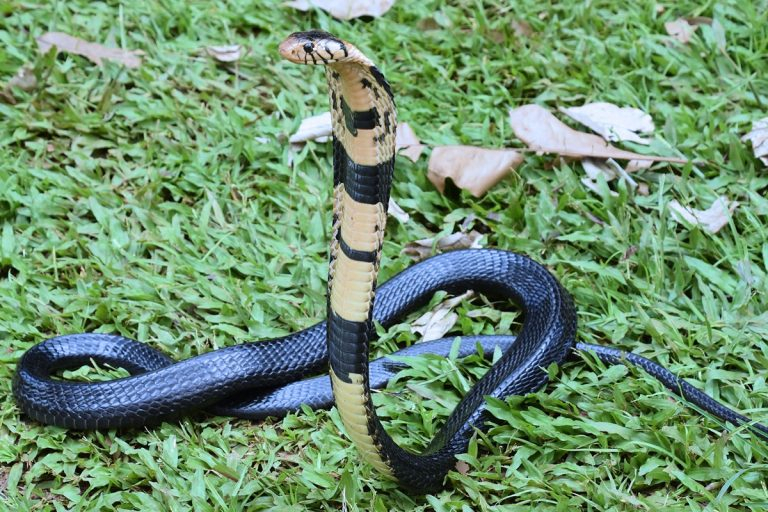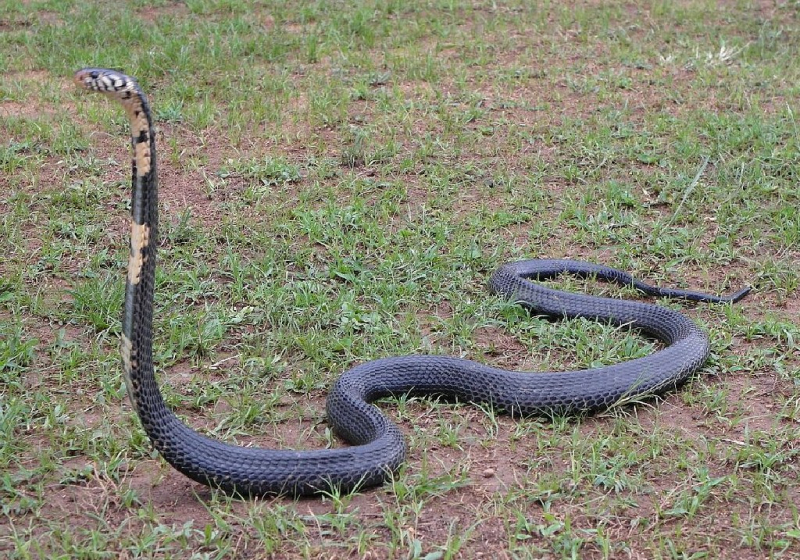Forest Cobra
The forest cobra, scientific name Naja melanoleuca, is a type of poisonous snake in the family Elapidae. It is sometimes referred to as the black cobra and the black and white-lipped cobra. The native habitat of the species is primarily in central and western Africa. With a record length of 3.2 meters, it is the largest true cobra species. Despite favoring environments in lowland forests and wet savannas, this cobra is quite versatile and can be found in drier temperatures within its range.
It is frequently regarded as semi-aquatic and a very good swimmer. The forest cobra is a generalist in its eating habits and consumes a wide range of foods, including small mammals, other reptiles, and huge insects. This kind of snake is alert, tense, and regarded as being extremely dangerous. It will adopt the standard cobra warning stance when cornered or threatened, raising its forebody off the ground, extending a narrow hood, and hissing loudly. Due to a number of reasons, human bites from this type of African cobra are less frequent than those from other African cobras, but they are still a serious emergency.
A cousin of the king cobra is more than capable of killing a person in a single bite. The forest cobra may actually kill 65 adults in one bite because of its powerful bite and huge venom production. This is due to both its low LD50 score of 0.22 and the large volume of venom it is able to inject. The forest cobra is one of the most potent venomous snakes, with bites averaging 570 mg and sometimes up to 1100 mg.












